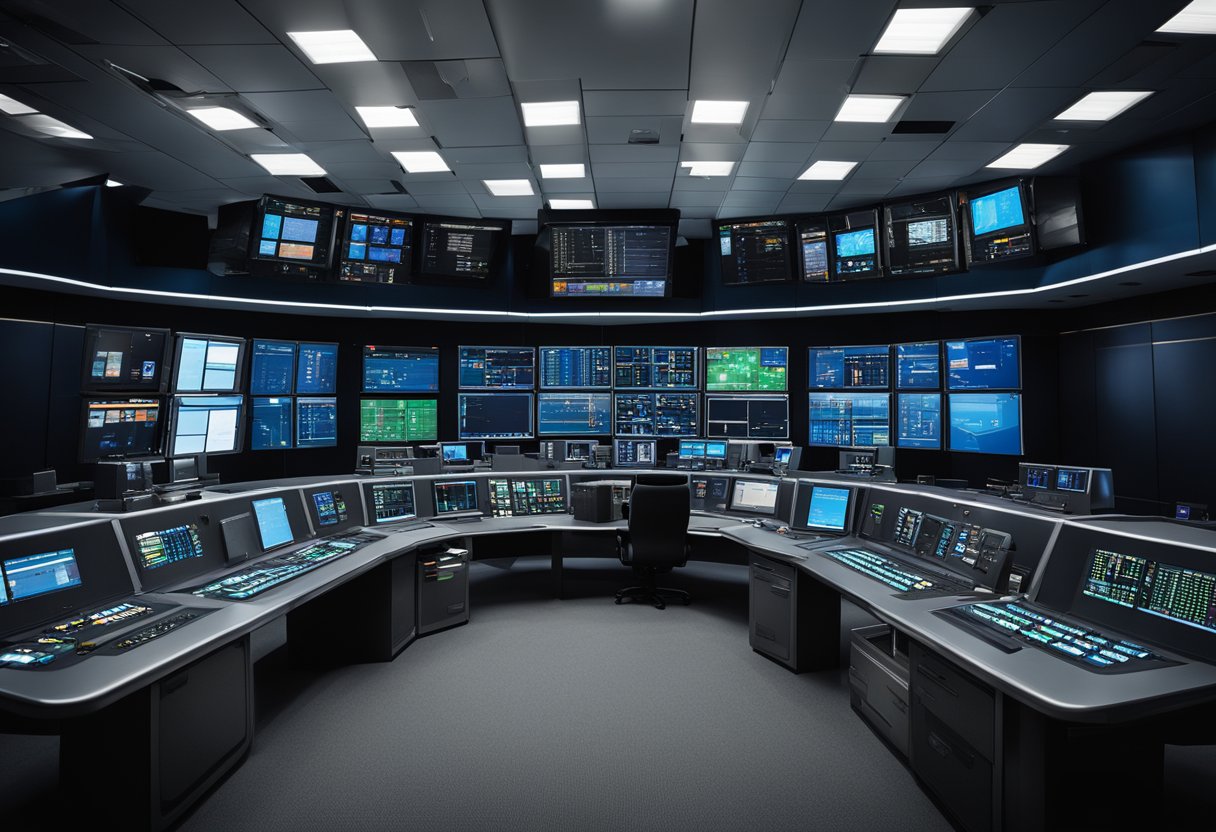
With the dawn of commercial space flights, the topic of space tourism safety protocols has never been more pressing. As we venture beyond the familiar confines of Earth, ensuring the safety of passengers in the vastly different environment of space is crucial. The industry has seen rapid growth, with private companies offering suborbital flights and outlining plans for orbital experiences. This burgeoning sector presents unique challenges and requires stringent safety measures.
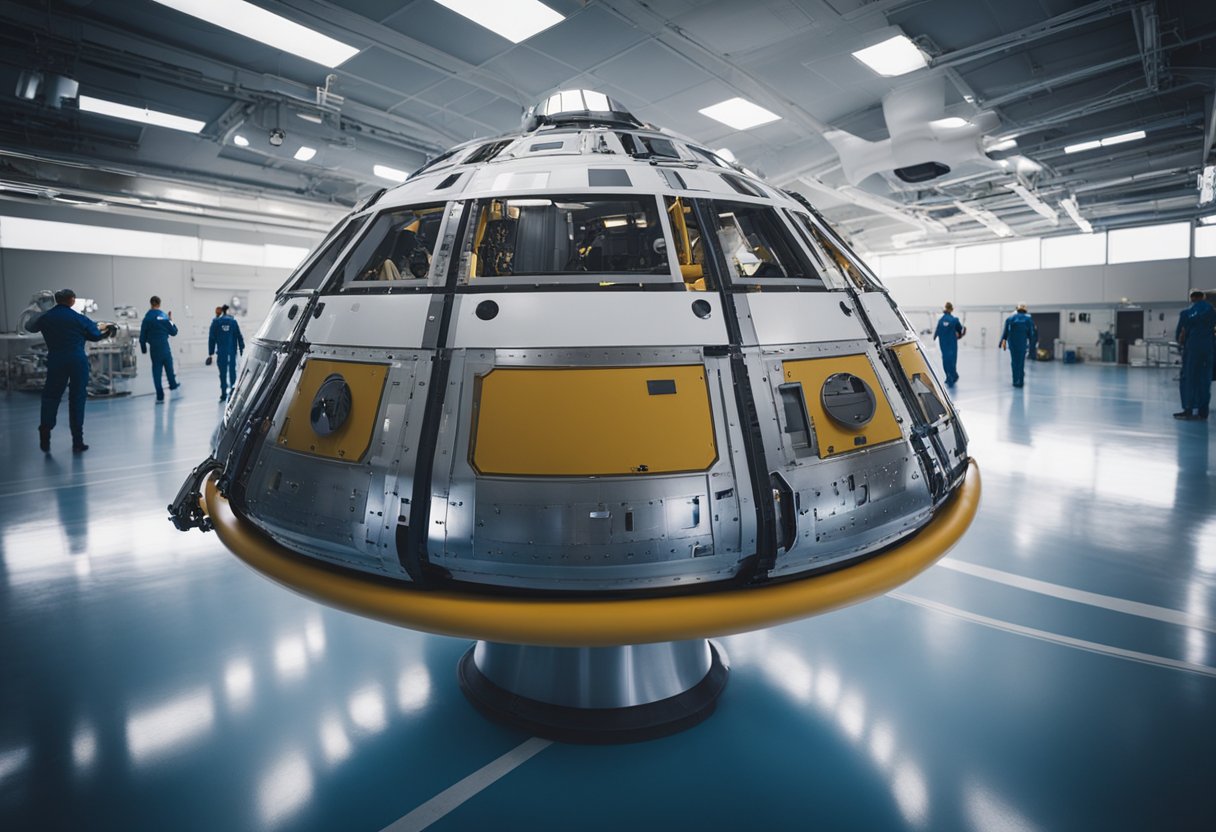
Understanding the risks inherent to space travel is essential for both tourists and operators. From the intense forces experienced during launch to the exposure to cosmic radiation outside of Earth’s protective atmosphere, all potential hazards must be carefully evaluated. It’s not just about the thrill of venturing into space; it’s about returning home safely. Therefore, robust safety protocols and regular oversight are imperative. Regulations and best practices are continually being developed to standardise safety measures and training for space flight participants.
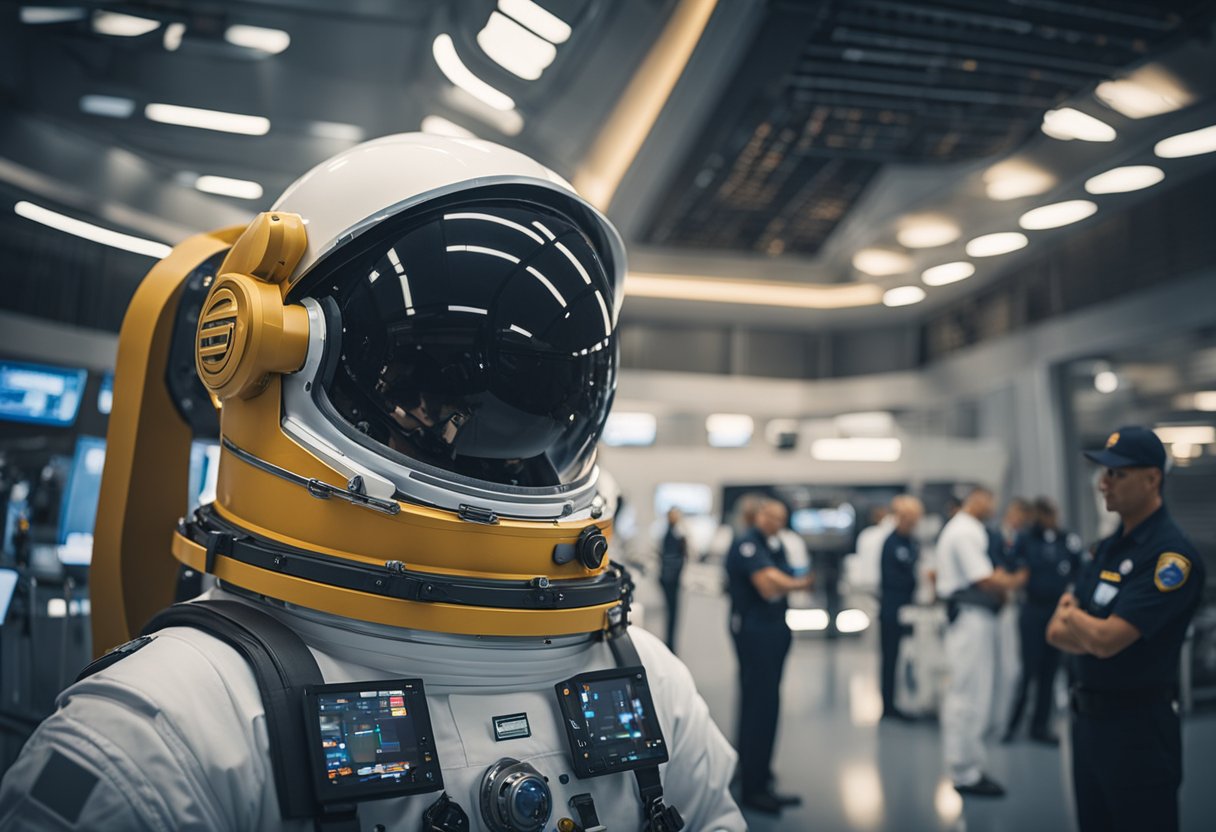
As we explore the burgeoning domain of space tourism, it’s crucial to recognise the milestones that have paved the way, the significant contenders driving the industry, and the market dynamics shaping this novel realm of exploration.
Space tourism has transitioned from a science fiction dream to palpable reality. It began with Dennis Tito‘s landmark journey in 2001 as the first private spacefarer aboard the Russian Soyuz spacecraft. Since then, several self-funded individuals have journeyed to the International Space Station (ISS), showcasing the potential for a broader commercial space travel market.
Virgin Galactic, SpaceX, and Blue Origin have emerged as trailblazers in the commercial spaceflight industry. Virgin Galactic has been working on suborbital trips with its SpaceShipTwo, a vehicle designed for six passengers. SpaceX, founded by Elon Musk, has plans to extend its offerings beyond current cargo missions to include manned flights. Jeff Bezos’ Blue Origin aspires to cater to both orbital and suborbital tourism through its New Shepard rocket — a testament to the ongoing innovation within the sector.
The cost of engaging in space tourism is a defining factor in the market’s development. Initially, space experiences were afforded only by the ultra-wealthy, but ongoing technological advancements promise broader access in the near future. A component of this shift is visible at early space tourism websites like SpaceVoyageVentures.com, which details emerging and available space tourism opportunities. As cost decreases and access widens, we can anticipate greater public participation in this new frontier.
When we consider travelling beyond Earth’s atmosphere, understanding the potential risks is crucial for ensuring safety. Factors such as the physical and mental strain on the body, the possibility of accidents, and the reliability of technical systems are all vital areas to address.
Space travel exposes individuals to unique health risks that we must carefully manage. Radiation exposure is significantly higher outside of Earth’s protective magnetic field, which can lead to an increased risk of cancer and other health issues. Extended periods of weightlessness also have physical effects, such as muscle atrophy and bone density loss.
Mentally, the isolation and confinement can result in psychological stress. Pre-flight training includes preparation for these conditions, but the actual experience can still be taxing on space tourists. On websites like SpaceVoyageVentures.com, prospective travellers can find detailed explanations of these health risks.
The history of space exploration has recorded incidents that highlight the risk of accidents during space travel. The disintegration of the Space Shuttle Challenger shortly after liftoff in 1986, and the Space Shuttle Columbia in 2003 during its re-entry into Earth’s atmosphere, serve as solemn reminders of the potential for catastrophic consequences.
Debris in space, such as disused satellites and spent rocket stages, poses additional collision dangers, potentially causing critical damage to spacecraft. Every mission must have a strict debris avoidance strategy to mitigate these risks.
The complexity of spacecraft design inherently includes the risk of technical and mechanical failures. Spacecraft systems are engineered with multiple redundancies to prevent a single-point failure from ending a mission catastrophically.
We rigorously test all components for faults and lifespan under space conditions. However, the extreme environment of space can impact even the most robust systems unexpectedly. Continuous monitoring and the ability to perform in-flight repairs are integral to mission protocols to ensure the safety of space tourists.
In the burgeoning industry of space tourism, our commitment to safety is paramount. We address this through rigorous onboard safety measures, comprehensive pre-flight training, and strict adherence to regulatory compliance.
For every space tourism mission, onboard safety is our top priority. Our spacecraft are equipped with the latest safety technologies to manage both routine and emergency scenarios. These measures include automated hazard detection systems, fire suppression capabilities, and life support redundancies to ensure travellers’ well-being in the unique environment of space. In-flight safety protocols are designed in alignment with established safety standards, drawing on aerospace best practices to minimise risks. Every craft undergoes regular inspections to maintain its license and certification from bodies such as the Federal Aviation Administration (FAA).
Before embarking on a space voyage, passengers receive extensive training encompassing a range of simulations and educational modules. This includes familiarisation with spacecraft systems, emergency procedures, and managing the physical effects of space, such as microgravity. We ensure that everyone on board is thoroughly prepared for the journey ahead, which enhances their safety and overall experience.
Our operations strictly conform to the safety regulations and standards set forth by the FAA and other relevant authorities. Compliance is not just about adhering to existing laws, it’s about exceeding them to safeguard all aspects of our missions. We actively partake in ongoing dialogues to refine safety regulations and strive for continuous improvement. Our licensing process is comprehensive, embedding safety at the core of our company ethos, with all necessary certifications and regular safety audits reinforcing our determination to operate at the pinnacle of safety excellence.
As pioneers in space tourism, we at SpaceVoyageVentures.com stand at the forefront of shaping the future of safe space travel for everyone.
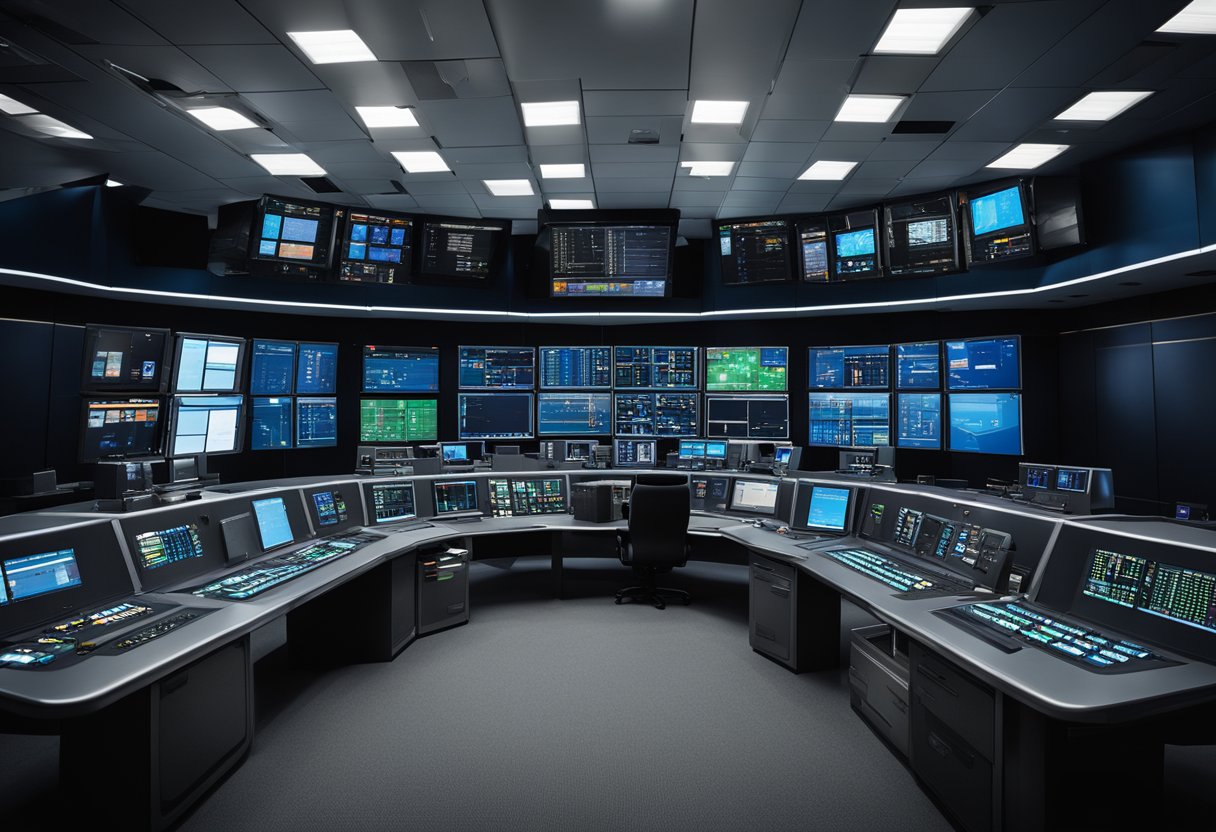
Safety is paramount in the burgeoning field of space tourism, where regulatory frameworks and oversight bodies ensure the wellbeing of civilians venturing beyond Earth’s atmosphere. We’ll explore the roles of the Federal Aviation Administration, international treaties, and industry self-regulation in safeguarding these flights.
The Federal Aviation Administration (FAA) plays a crucial role in regulating United States’ commercial space endeavours. It’s our responsibility to obtain a licence from the FAA before launching any space tourists. The Office of Commercial Space Transportation, a part of the FAA, oversees compliance with safety regulations. Their stringent protocols ensure that operators meet safety requirements to protect both passengers and crew during spaceflight operations.
International treaties and agreements form the bedrock of space activity governance. Accords orchestrated by the United Nations Office for Outer Space Affairs bind us together, obligating signatories to adhere to principles ensuring peaceful use of outer space. We follow these frameworks diligently when planning our missions, ensuring that our operations remain compliant with global standards and contribute to international space safety.
In the nascent stage of space tourism, industry self-regulation plays a significant role. As pioneers in this sector, we commit to establishing best practices and crafting our internal safety protocols that often exceed the minimum requirements. Sharing information about past incidents and collaborating on safety standards allows us to continuously improve and maintain a high level of safety for our space tourists.
By adhering to these guidelines, we facilitate a safe environment for the advent of space tourism as it transitions from the visions on SpaceVoyageVentures.com to an attainable reality for humankind.
Before embarking on the extraordinary journey to space, we must ensure our readiness through meticulous preparation and training. It’s not just about the thrill but also the safety of the individuals venturing beyond our atmosphere. Adequate physical conditioning and comprehensive safety training are paramount for the wellbeing of space tourists.
Eligibility for space travel hinges on meeting stringent health and fitness standards similar to those for professional astronauts. Prospective tourists undergo thorough medical evaluations to ensure they’re free from conditions that could be aggravated by space travel. With the potential risks of microgravity on the body, it is essential that tourists maintain a good level of physical fitness.
All tourists receive detailed emergency procedures education. This training covers a range of scenarios, from spacecraft malfunctions to medical emergencies. Participants learn how to respond to cabin depressurisation, manage fire outbreaks, and administer first aid. It is crucial for them that they comprehend the informed consent documents that detail the inherent risks of spaceflight.
Tourists also practice using the specialist equipment they’ll need on their journey. They familiarise themselves with the layout of the spacecraft and learn how to move and operate in a weightless environment. This preparation is key to not only maximising their enjoyment but also ensuring their safety and that of their fellow passengers.
Our insights on preparation and training for space tourists are consistently evolving as we gather more data. By visiting SpaceVoyageVentures.com, space enthusiasts can stay abreast of the latest advancements and requirements for upcoming celestial journeys.

Before a rocket launch, it’s crucial to have rigorous inspections and protocols in place. These steps ensure the safety of space tourists and the success of the mission.
We conduct a thorough examination of the launch vehicle to guarantee its readiness for departure. Our checklist includes:
Each of these points is crucial to mitigate the risk of malfunction during the mission.
Before liftoff, we assess atmospheric conditions, including:
These considerations help us reduce environmental impact and enhance launch safety.
Clear and reliable communication is paramount. We establish protocols to maintain constant contact between ground control and the space capsule, particularly the Crew Dragon capsule, throughout the mission. These include:
Through meticulous checks and protocols, we strive to provide a safe and exhilarating experience for our space tourists. Stay informed on the latest developments in space tourism at SpaceVoyageVentures.com.

In ensuring the safety of passengers in space, critical systems are in place to address the unique challenges presented by a microgravity environment.
Oxygen Supply and Carbon Dioxide Removal: We enable a breathable atmosphere by managing oxygen levels and removing excess carbon dioxide. Oxygen is supplied to compensate for depletion due to consumption, and carbon dioxide is scrubbed from the air to prevent toxicity.
Temperature and Humidity Control: We ensure that the temperature and humidity within the spacecraft remain at safe levels. This is vital for both the comfort and the well-being of space tourists, as extreme variations could be harmful.
Vital Signs Monitoring: The health of all our passengers is continuously monitored. Important data such as heart rate and blood pressure are tracked to ensure immediate response in case of any medical anomalies.
System Health Checks: We routinely perform diagnostics on all critical systems. This allows us to detect and rectify any irregularities within the spacecraft’s life support or navigation systems swiftly.
Emergency Protocols: In cases of sudden decompression or failure of critical systems, automated responses such as the closure of bulkhead doors or the deployment of oxygen masks are initiated without delay.
Radiation Shielding: The spacecraft is equipped with specialised materials to reduce radiation exposure during the journey. These protective measures are essential for safety in the high-radiation environment of space.
Italicised keywords are to denote emphasis on vital functions within the sections and lists are utilised for clarity and organisation of content.
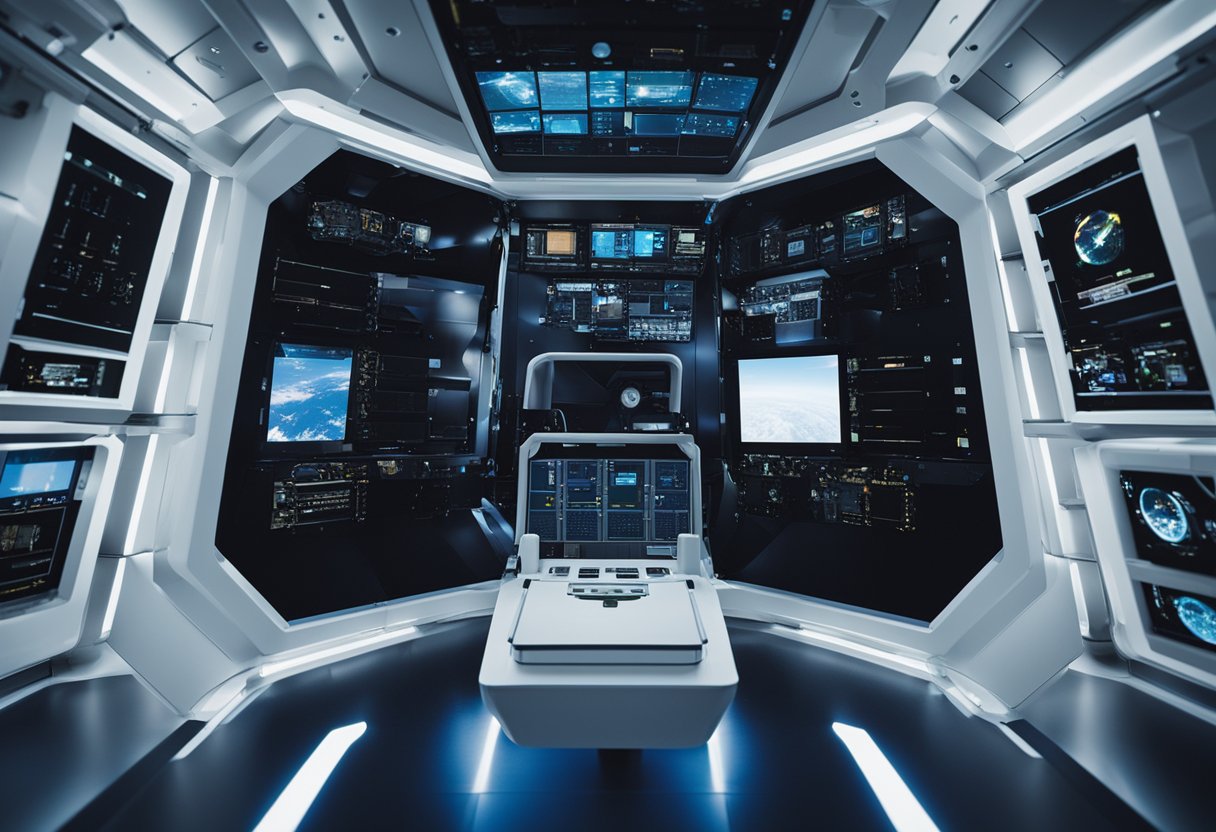
In the realm of space tourism, we recognise the paramount importance of emergency response and contingency planning. We ensure every measure is in place for the safety and well-being of our space tourists, addressing potential safety concerns and health risks with thorough procedures.
We equip our spacecraft with comprehensive emergency supplies tailored to the unique nature of space travel. These include, but are not limited to, medical kits that are specifically designed for treating health risks related to microgravity, and emergency rations that are safe and accessible in the event of accidental containment breaches or sustenance systems failure.
Our rescue and evacuation strategies are rigorously developed to handle incidents in the austere environment of space. Should the unthinkable occur, we have contingency routes defined for a swift evacuation. We employ protocols that include the immediate isolation of afflicted areas and the sequential engagement of emergency escape vehicles, if necessary, to ensure the safety of all aboard.
We provide medical response and support inline with the highest standards for space travel. Our crew is thoroughly trained in emergency procedures to address accidents or medical emergencies promptly. We emphasise ongoing health monitoring of space tourists to pre-emptively respond to any arising health risks. In collaboration with SpaceVoyageVentures.com, we continually update and refine our medical response plans to align with current best practices.
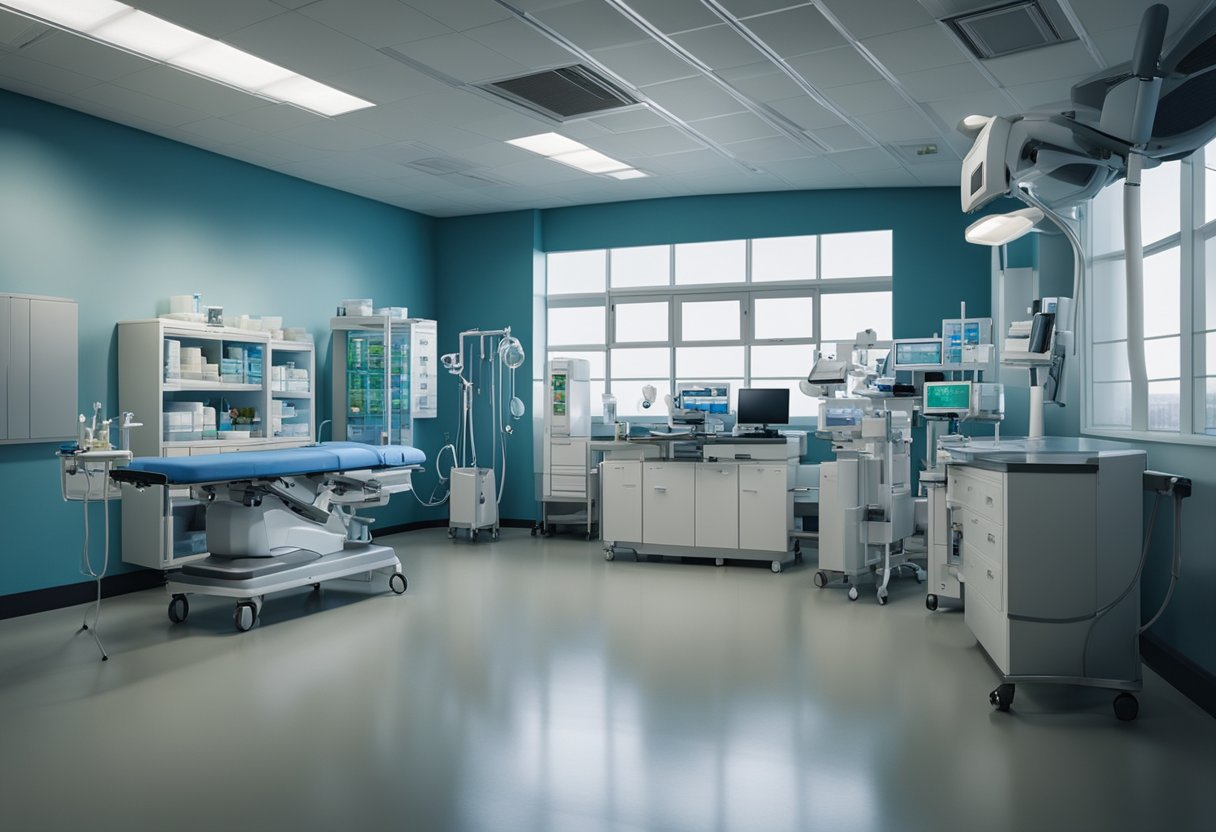
After a journey to the stars, it’s imperative that we ensure the safety and wellbeing of our space tourists continue even once they’re back on terra firma. We prioritise their health and gather valuable feedback to aid in research and development.
Upon returning from space travel, we conduct thorough health assessments to monitor the tourist’s wellbeing. Health assessments include physical examinations to check for any physiological changes or signs of adverse effects due to microgravity or cosmic radiation. These examinations help us identify any immediate health concerns, which may range from minor issues such as space motion sickness to more serious conditions that could result from a space-related accident. We also utilise the latest biometric monitoring techniques to collect data for further analysis.
Debriefing sessions serve to provide us with in-depth feedback from the perspective of the participants. During these sessions, space tourists are encouraged to share their experiences, specifically discussing any discomfort or issues they encountered. This feedback is critical not only for the continuous improvement of safety protocols but also for guiding future research and development. Furthermore, these debriefings are an opportunity to review potential risks and incidents, ensuring any accidents are meticulously analysed and learnt from. Our aim is to enhance the overall experience for the next wave of adventurers, and learns from NASA astronauts’ expertise to cover all bases in our procedures.
With the space tourism industry poised to expand beyond preliminary journeys, we must examine the impending challenges and the technological strides that will shape its future.
Innovations in space technology are crucial for bolstering the safety and viability of space tourism. The development of reusable rockets is at the forefront, aiming to reduce costs and increase the frequency of space travel. Private companies are leading the race, employing rigorous research and development efforts to create more efficient propulsion systems and improve spacecraft designs. Emphasis on technology that ensures the safety of tourists is paramount, as are robust training programmes for potential space travellers.
As we progress in making space tourism a reality, the environmental implications cannot be overlooked. The quest for sustainability involves scrutinising the emissions from spacecraft and mitigating their impact on the Earth’s atmosphere. Our industry must adopt practices that align with environmental preservation and space science to ensure that our ventures into the cosmos do not compromise the health of our planet. This includes the potential for innovations such as green propellants and the implementation of international guidelines to safeguard our environment.
By addressing these challenges head-on and embracing continuous development in spacecraft technology, we bolster our quest to not just reach the stars but to do so responsibly.
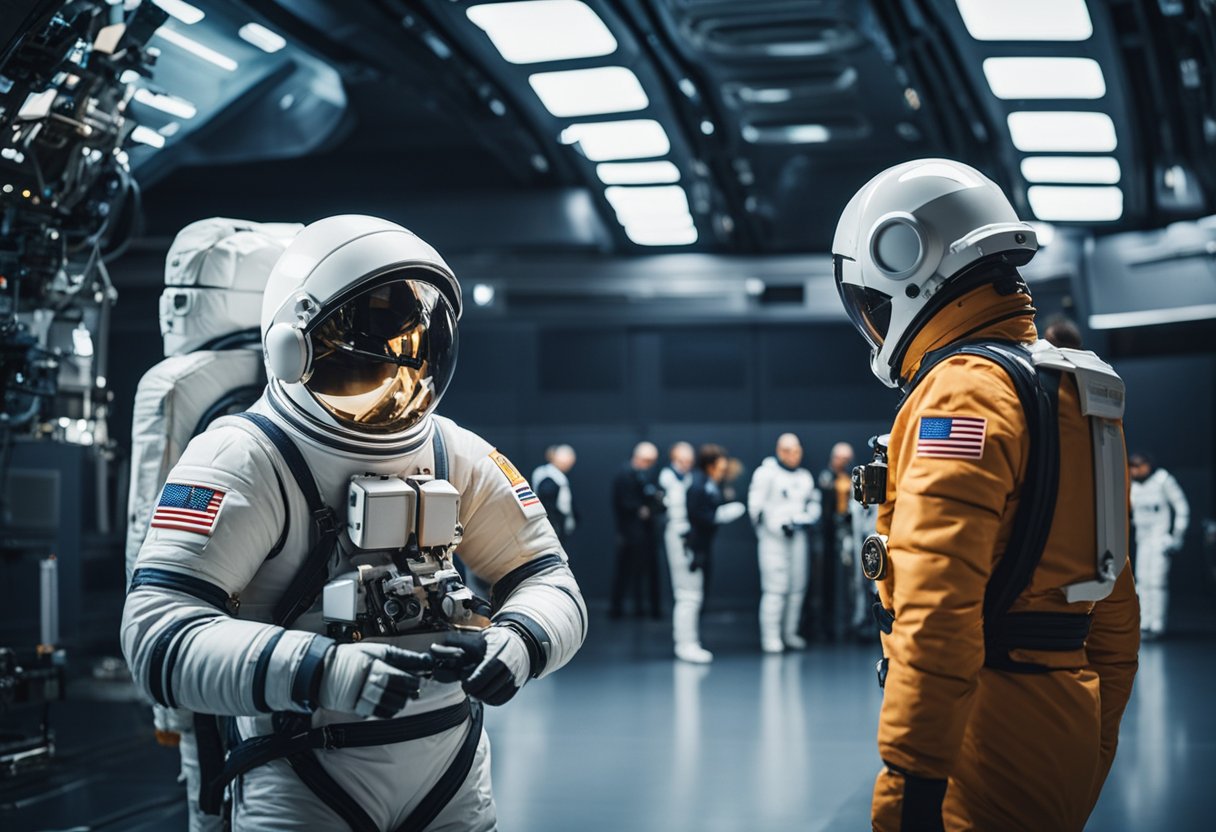
As pioneers in the burgeoning field of space tourism, we recognise our integral role in expanding the frontiers of space exploration. Our activities not only cater to the aspirations of private individuals to venture into space but also complement the ongoing scientific endeavours led by government space agencies.
We work closely with organisations such as NASA and Roscosmos to ensure our space tourism initiatives align with global space exploration goals. Our partnerships enable us to use the infrastructure, such as the International Space Station, in ways that support larger space activities. We can provide opportunities for private citizens to experience space under the guidance of NASA astronauts, blending public interest with scientific pursuit.
Our space tourism missions serve as a platform for conducting space science experiments. These experiments often require the unique conditions of microgravity found in Low Earth Orbit. By facilitating access to entities like SpaceVoyageVentures.com, we’re not just promoting space tourism; we’re also contributing valuable data that aids in the development of safer and more efficient space travel for future astronauts and researchers.
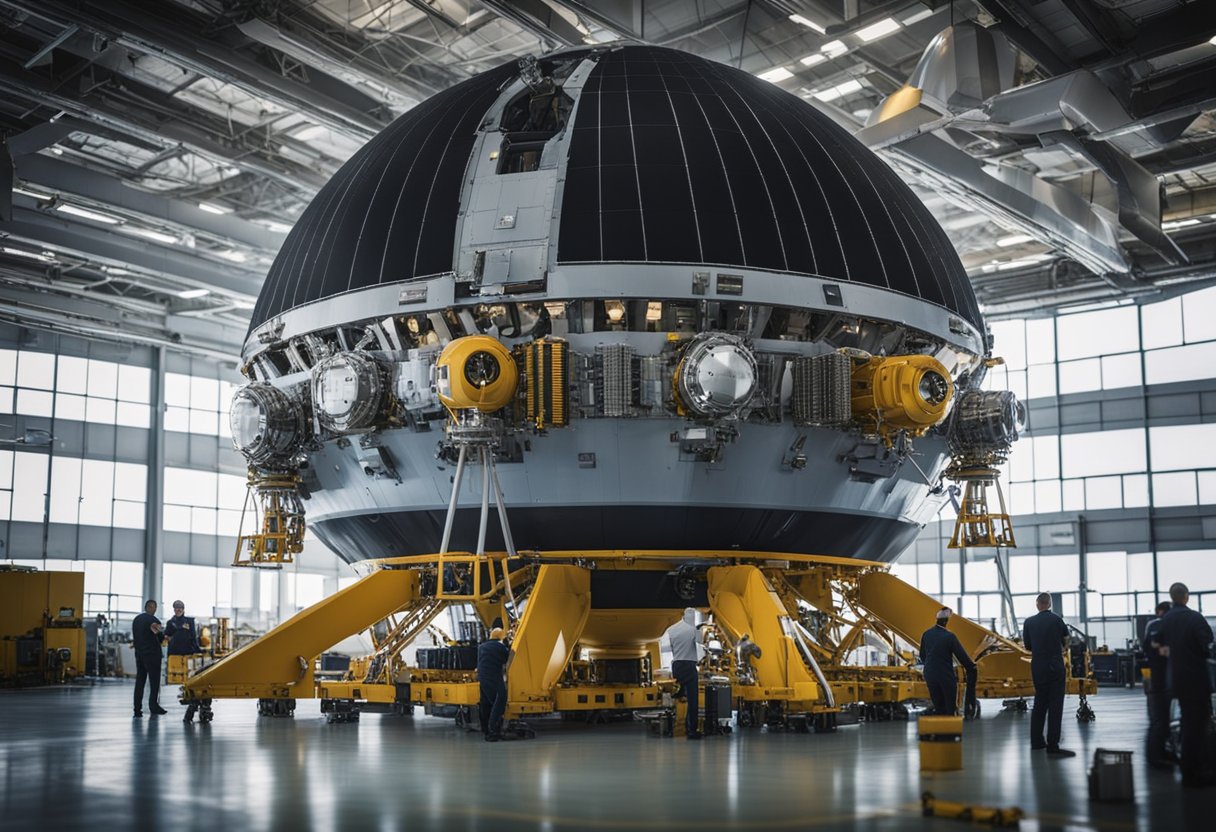
In light of the growing interest in space tourism, we’ve compiled answers to some of the most commonly asked questions regarding the safety protocols of commercial space flights.
Our primary safety considerations for commercial space flights include the structural integrity of the spacecraft, the reliability of the launch systems, and life support systems’ functionality. We must assess and mitigate the risks of exposure to high levels of radiation and the effects of microgravity on the human body.
Regulatory bodies, such as the Federal Aviation Administration (FAA), enforce strict guidelines. Companies must acquire necessary licences and permits, and their vehicles must meet defined safety standards to transport passengers.
In the event of a mishap, space tourists can rely on the spacecraft’s emergency protocols, which include abort systems designed to quickly and safely return the craft to Earth. Comprehensive contingency plans are developed to handle potential in-flight emergencies, such as cabin depressurisation.
Astronaut training is crucial for ensuring that space tourists are prepared for the rigours of space travel. Comprehensive training helps individuals understand how to react to various scenarios, including zero-gravity manoeuvres and emergency evacuation procedures.
While space tourism companies strive to ensure the safety of passengers, it’s important to remember that space travel inherently presents certain risks. Companies cannot guarantee well-being but are committed to minimising risks to passengers’ health.
Space tourism vehicles must adhere to rigorous qualifications and safety protocols. Structural tests, rigorous inspections, and meeting specific design and performance criteria are integral to achieving operational safety and reliability.